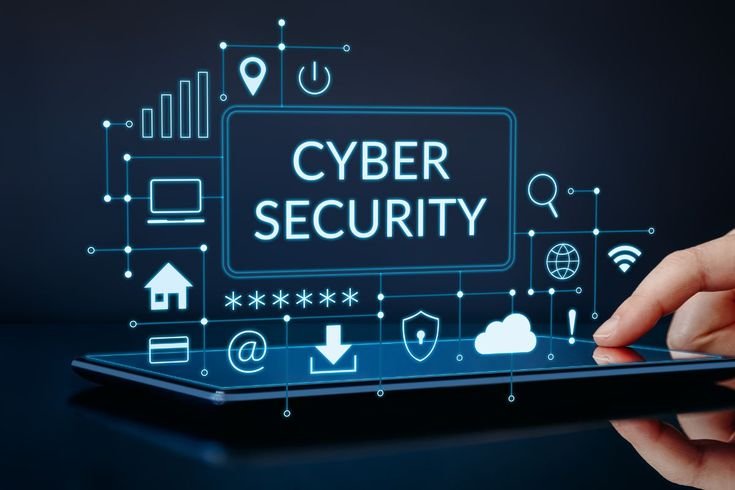Introduction
Think about how often you’re online. Banking, shopping, chatting, streaming — your whole life has a digital shadow. Now imagine someone trying to break in. They don’t need a crowbar; they just need a clever line of code or a fake email that tricks you into clicking.
For years, we relied on firewalls and antivirus tools as our gatekeepers. But attackers got faster, more creative, and harder to spot. That’s where AI changes the game. It’s like having a security guard who never blinks, never gets tired, and can sift through millions of signals in the time it takes you to blink.
In today’s internet-driven world, AI in cybersecurity isn’t an optional upgrade — it’s the difference between safety and chaos.
So, What Is AI in Cybersecurity?
Let’s strip it down:
Artificial Intelligence (AI): Software that learns, adapts, and improves without being spoon-fed every rule.
Cybersecurity: Protecting systems, data, and networks from digital break-ins.
Put the two together, and you’ve got defenses that don’t just follow a rulebook — they actually learn from past attacks, predict the next move, and adapt on the fly.
You’ve probably seen it in action already:
Gmail quietly shoving that “You’ve won a free iPhone” email into spam.
Your bank freezing a sketchy 2 a.m. charge before you even wake up.
Antivirus tools catching brand-new malware within hours of discovery.
That’s AI, quietly saving your digital skin.
A Quick History Lesson
Cybersecurity has always been a tug-of-war
2000s: Firewalls and intrusion detection came in. Better, but still rule-based.
2010s: Cloud, smartphones, and smart devices multiplied the attack surface. AI entered the scene, spotting weird patterns and zero-day exploits faster than humans ever could.
2020s: Now AI isn’t just helping analysts — it’s leading the defense, especially against ransomware and large-scale attacks.
If there’s one truth in this history: hackers adapt fast. Defenders need tools that adapt faster.
Why AI Matters
Cyberattacks are no longer rare headline events — they’re constant:
1. Real-Time Detection: Catching attacks in seconds, not days.
2. Pattern Recognition: Spotting the subtle “fingerprints” of hackers in massive data streams.
4. Automation: Handling millions of alerts so human teams can focus on real threats.
5. Proactive Security: Sniffing out weaknesses before attackers exploit them.
Think of traditional security as a static shield. AI turns it into one that moves before the arrow even leaves the bow.
Where It’s Already Working
This isn’t futuristic talk — AI is everywhere in cybersecurity today:
Finance: Detecting credit card fraud in real time.
Healthcare: Protecting hospitals from ransomware that could paralyze patient care.
Cloud Security: Monitoring millions of logins for signs of account hijacking.
Corporate IT: Identifying insider threats — sometimes it’s not hackers, but compromised employees.
Government & Defense: Countering espionage and large-scale cyber warfare.
You might not see it, but AI is constantly guarding your money, your identity, and sometimes even your safety.
Why You Should Care
Because this isn’t just an “IT department problem” anymore.
Wallet: AI blocks fraud before it empties your bank account.
Privacy: It keeps your photos, chats, and work files safe.
Workplace: Stops ransomware from shutting down entire companies.
Safety: Protects hospitals, power grids, and even public transit from sabotage.
AI isn’t magic. It comes with its own flaws:
Adversarial Attacks: Hackers are starting to design malware that tricks AI.
False Alarms: AI sometimes flags normal activity, drowning teams in alerts.
Training Data Issues: Garbage in, garbage out — bad data weakens defenses.
Costs: Powerful AI tools aren’t cheap or simple to set up.
Ethics: How much monitoring is too much monitoring?
And here’s the twist: AI is a weapon for defenders, but hackers are using it too. It’s an arms race.
Who’s Building the Future
The push is coming from all sides:
Tech giants like IBM, Microsoft, Cisco, and Google.
Startups focusing on phishing, ransomware, and zero-day detection.
Governments funding AI for national defense.
Universities working on explainable AI so humans can actually trust the results.
Open-source communities making tools available for everyone.
What’s Next?
Expect a few big shifts in the next decade:
Explainable AI: So analysts can actually understand why an alert was triggered.
Autonomous Response: AI not just spotting attacks, but shutting them down instantly.
Shared Defense Models: Different industries pooling data so AI can learn from attacks faster.
Quantum-Safe Security: Preparing for quantum computers that could break today’s encryption.
The future won’t just be “AI in cybersecurity.” It’ll be “cybersecurity through AI.”
—
Quick FAQs
Q: Can AI stop all attacks?
No. It lowers risk and speeds up response, but hackers always evolve.
Q: Will AI replace human jobs?
Not really. AI handles detection at scale. Humans still handle strategy and judgment.
Q: Is AI security expensive?
Right now, yes. But prices drop as adoption grows.
Q: Can hackers use AI too?
Absolutely. That’s why it’s both a shield and a sword.
